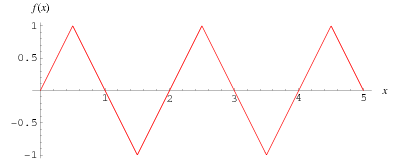First, a link. Someone came up with a brilliant patch for Rings, feeding it clocked random noise, which makes for a very convincing cello.
I’d generally rather hear a real cellist than a perfect imitation of one — but the ability to imitate a real instrument demonstrates the ability to create sounds that are unreal and otherworldly but have the characteristics of physical, acoustic objects. That’s where the magic is.
This is making me wonder a little about the Uncanny Valley phenomenon as it applies to sound… if it does. Slightly-off human-like voices can be a little creepy, but not nearly as much as a subtly wrong human visual appearance. Slightly-off musical instrument sounds, animal noises and sounds generally categorized as foley, usually don’t bother us at all.
That thought ties in with my current reading: R. Murray Schafer’s The Soundscape: The Tuning of the World. It’s not quite the book I expected, but I’ll stick with it. So far it’s sort of a catalog of descriptions of the sounds and soundscapes of the world, in both poetic and scientific terms — with an emphasis on things such as noise pollution, the lowered sensitivity toward sound that people have had since the Industrial Revolution, the lost sounds of extinct species and traditions and obsolete technologies, and so on.
And before that was Peter Kingsley’s In the Dark Places of Wisdom. That one was a combination of fascinating and infuriating. While I believe the author’s style and the structure of the book were intentional, it grated on me and left me frustrated at the end.
The general thrust of the book was the story of the pre-Socratic philosopher (and mystic) Parmeneides, who was Zeno’s teacher. (That’s the Zeno’s Paradox guy — if you step halfway across a room, and then halfway again, and halfway again, etc. you will never, according to math anyway, reach the other side. Although in practice you get down to atoms and then the Planck length, and statistically merging some non-zero number of the molecules of your foot with the wall, and… yeah.) Kingsley has a non-mainstream interpretation of who Parmeneides was and what his poetic writings were referring to. That interpretation is criticized by other scholars, but came off as relatively plausible to me at least — I was mostly reading this for inspiration, thanks to a tip from someone online.
Kingsley argues for a Western tradition (with bidirectional Eastern and African influences) of mysticism and holistic thought that was basically killed off by Socrates, then ignored by modern scholars because it didn’t fit the mold they expected. Except he never really concludes that argument or explains why it’s so important for modern people. He never really gets into a sort of Stoic-sounding-but-also-something-else world view that he hints at, either. He does try to sell the next book at the abrupt end-but-not-completion of the first, though. Argh. Nonfiction books shouldn’t be cliffhangers.
Anyway, it was still interesting. All we learn in grade school history about Greece is, basically, Socrates, Athens, and Homer. We don’t really find out about Apollo’s associations with the underworld (the sun goes into a cave at night, just like in Egyptian myth), the tradition of incubation (lying still in a small enclosed space as a means of contemplation / mystical journeying), Greek hero worship (almost literal), how Pythagoras used scientific/mathematical knowledge as a lure to attract people to his mystery cult (basically), or how Athens was kind of a colonialist bully to the rest of Greece.
There was a fair bit about silence, darkness, stillness, and the mystical that mostly didn’t come off as terrible woo and resonated with my own experiences. This might have me reconsidering the theme for the next album — it’s a much richer and more evocative theme than “nonlinearity.” But perhaps I will work both a technical theme and an emotional theme simultaneously, and I might yet find inspiration that merges the two.




